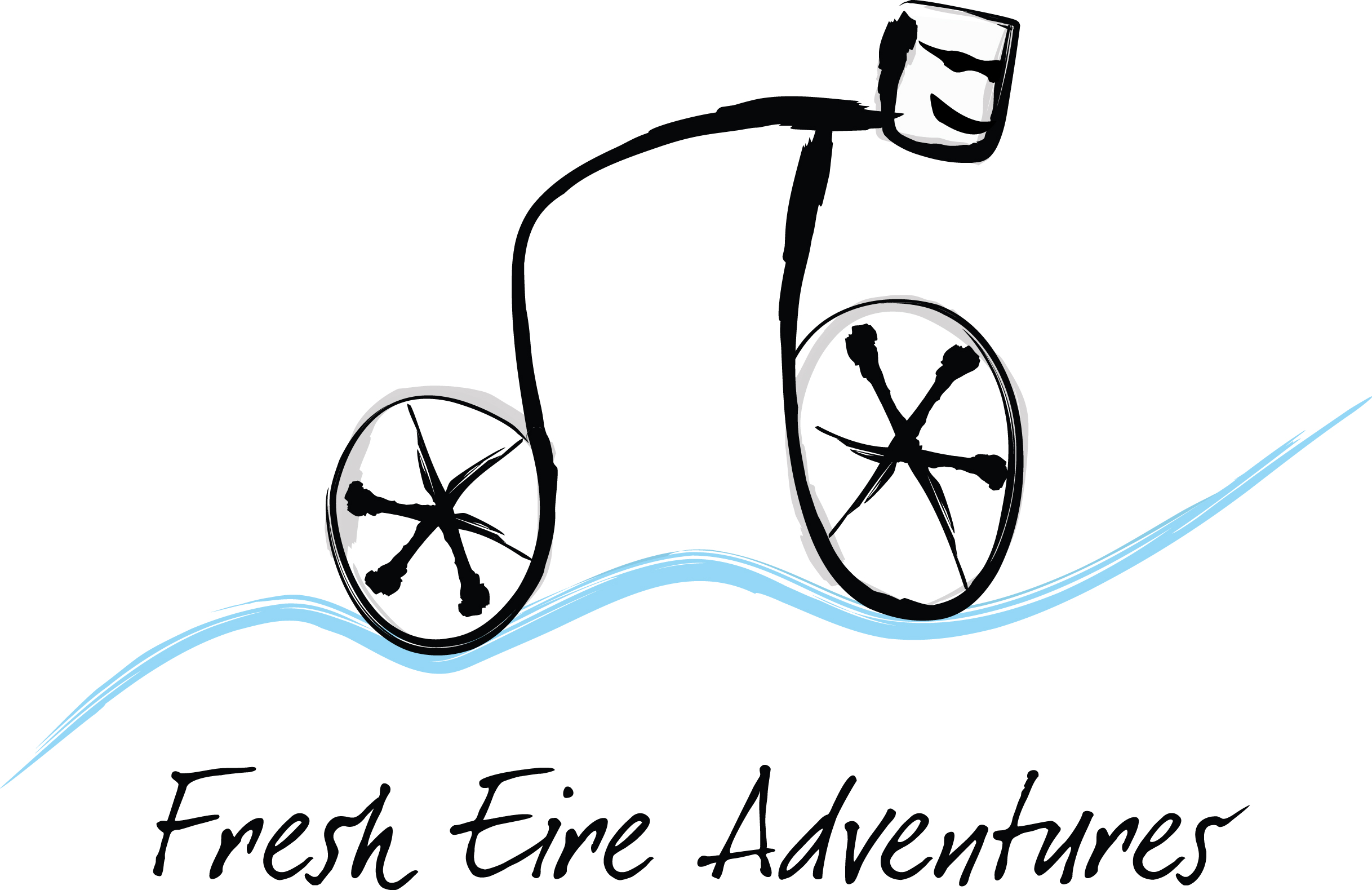Islands of Kerry
Visit the islands of Co Kerry either before or after your Fresh Eire Adventures bike trip and you'll be rewarded by stunning landscapes, wild seacapes and a glimpse into Ireland's monastic past.
Blasket Islands
Blasket Islands- Na Blascaodaí lie some 6km beyond the most westerly tip of the Dingle peninsula in County Kerry, large humps of sandstone with awesome cliffs rise from the Atlantic Ocean. Surrounded by smaller rocks and reefs, these are Na Blascaodaí. The largest of the nine islands An Blascaod Mór was finally abandoned in 1953 when the last twenty people living on the island were moved to the mainland. The island’s population, which once boasted one hundred and seventy five residents, had steadily declined through emigration. No other island community of this size yielded such a literary wealth, producing world renowned writers who documented island life in their beloved Irish language and whose work have been translated into many languages. An Blascaod Mór remains uninhabited today but the island is open to visitor
Skellig Islands – Na Scealga
Skellig Islands – Na Scealga lie thirteen kilometres off the coast of South Kerry, like floating pyramids of sandstone. The most spectacular of these islands, Sceilg Mhichíl – Skellig Michael – is a peaceful spiritual idyll and a designated UNESCO World Heritage Site. Over five hundred steps up a 1000 year-old stone stairway leads you up to one of the most magnificent monastic sites in Europe. Stone beehive huts where monks lived and prayed centuries ago cling to the Church of St. Michael. An Sceilg Bheag is a seabird sanctuary and one of the world’s greatest gannetries. It is home to more than 30,000 pairs of gannets among many other seabirds.
Valentia Island
Valentia Island is one of great beauty and contrast. The western part of the island is dominated by the barren, dramatic cliffs of Bray Head which command spectacular views of the Kerry coastline while the mild effect of the Gulf Streams result in Valentia’s balmy climate and lush, colourful vegetation. The island’s main village, Knightstown, is reminiscent of an Anglo-Irish Village with its many stately buildings and refined ambience
But the island’s historical lineage goes back much further than that. Tetra pod footprints were found on the northern part of the island. These magnificent imprints of history are thought to date from Devonian times between some 350 to 370 million years ago. An important quarry on the northern part of the island which opened in 1816 still flourishes today. The famous Valentia Slate has been used in many prominent buildings including the British House of Commons in London.
